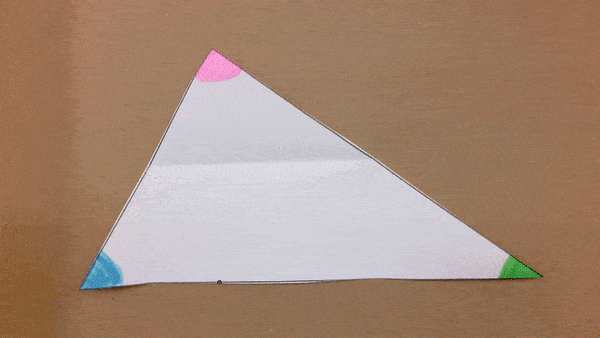As a calculus teacher, this is one of my favorite integrals.
This calculation is a fun challenge for students who are so deep into integration techniques they’ve forgotten that not every integral requires antidifferentiation. It’s hard to apply the Fundamental Theorem of Calculus here because the integrand has no obvious antiderivative. But the integral is easy to compute, because it represents the area of a semicircle of radius 1.
The area, and thus the integral, is  .
.
I bring this integral back later in the course to motivate the technique of trigonometric substitution.
If you can’t imagine the antiderivative of the integrand the FTC isn’t much help. That’s where a clever (if complicated) change of variables, together with a few trigonometric identities, comes in. Trig substitution solves the algebraic puzzle of integrating the square root of a difference.
But when I taught this topic this year something unexpected happened.
As usual, I presented students with the indefinite integral, expecting it to be inaccessible with their current tools. This would motivate the need for a new technique, and trig substitution would come to the rescue!
But two students didn’t need rescuing. Instead, they figured out a way to evaluate this integral using tools they already had. They did what I often encourage them to do, but in an ingenious way I never would have anticipated: They turned this indefinite integral into an area problem and used geometric reasoning to evaluate it!
They started by reimagining the indefinite integral as a definite integral.
Now here’s the region whose area is given by this definite integral.
The region can be thought of as a right triangle and a sector of a circle.
Because the circle has radius 1, the sides of the triangles are  and
and  .
.
Which makes the area of the triangle  .
.
Now the area of a circular sector is equal to  , where
, where  is the central angle. In our diagram
is the central angle. In our diagram
we have  , so
, so  . Since the radius of the circle is 1, the area of the circular sector is
. Since the radius of the circle is 1, the area of the circular sector is

The area of the entire region is then the sum of the areas of the triangle and the sector. But the area is also the value of the definite integral. So they must be equal!
Differentiating both sides (thanks again to the FTC) shows that we really have found an antiderivative of  , as required.
, as required.
And so
Which of course, is the same result we find using trig substitution.
I’ve taught this topic for many years and never thought of this approach. I’m grateful to have learned something new from my students, who never fail to impress me with their creativity. And I’m glad I gave them time and space to solve what I thought was an impossible problem! When I teach this next time, I’ll be sure to do it again. And I’ll be sure to share this ingenious integration.
UPDATE: I’ll also be sure to show them this other ingenious solution that a different student came up with!
Related Posts

















